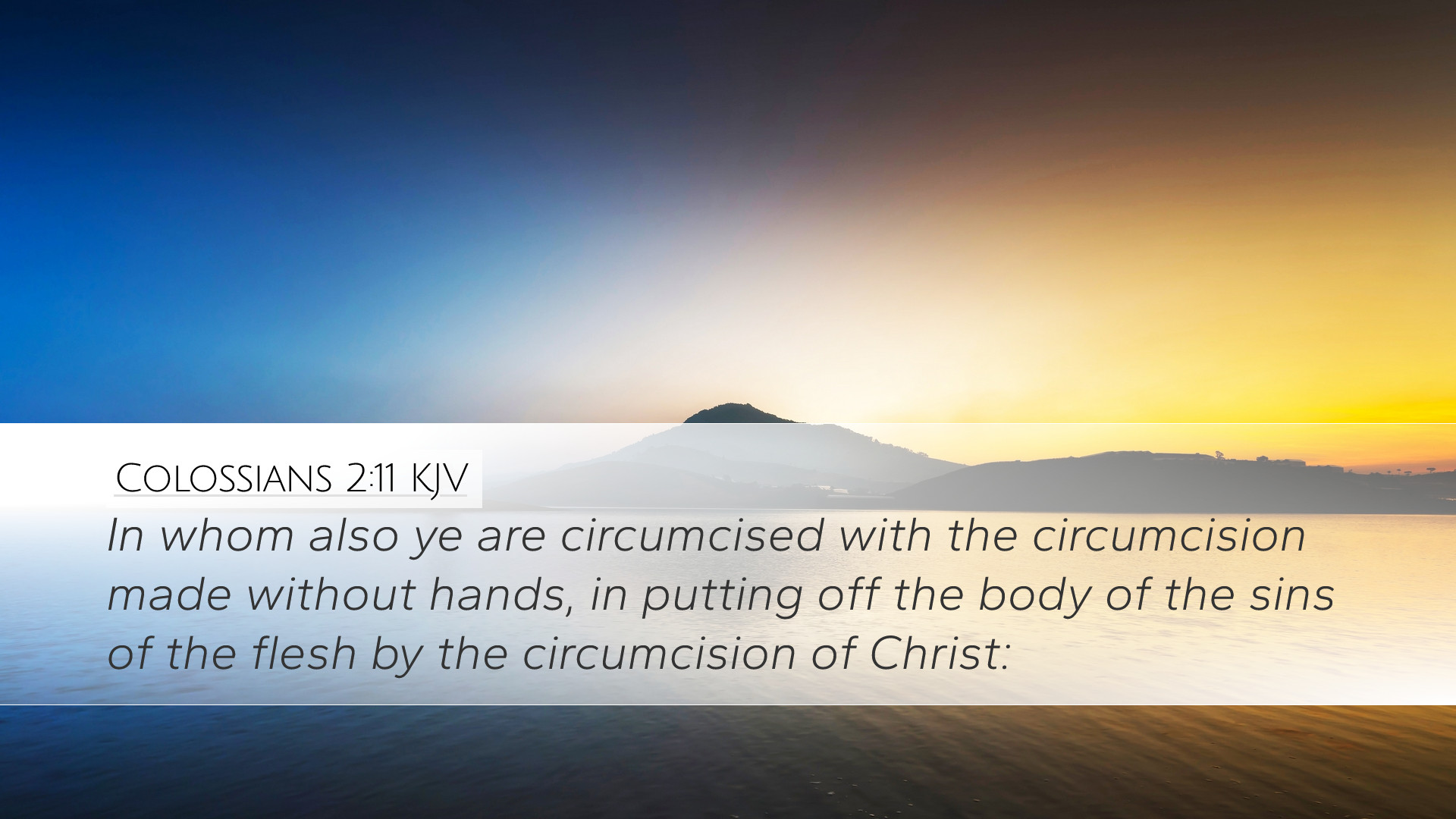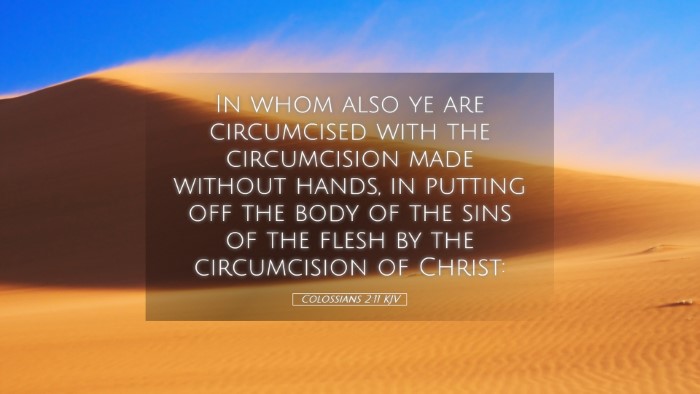Colossians 2:11 - A Deep Dive into Spiritual Circumcision
Verse Context: Colossians 2:11 states, "In whom also ye are circumcised with the circumcision made without hands, in putting off the body of the sins of the flesh by the circumcision of Christ." This verse speaks to the transformation and new identity that believers have in Christ, contrasting physical circumcision with spiritual rebirth.
Introduction
This verse encapsulates key theological themes central to the Pauline epistles, especially regarding the nature of salvation and the believer's identification with Christ. Commentators like Matthew Henry, Albert Barnes, and Adam Clarke provide insightful reflections that help unpack its rich meanings.
The Nature of the Circumcision
Spiritual Circumcision: The term "circumcision made without hands" is critical. According to Barnes, this phrase indicates that it is not a physical act but a spiritual reality. In spiritual circumcision, God performs an inner work that separates the believer from the dominion of sin and the old self.
- Henry's Perspective: He emphasizes that true circumcision is accomplished by the Spirit of God, indicating a deep, transformative work in the hearts of believers.
- Clarke’s Commentary: He adds that this circumcision signifies the removal of corrupt desires and the moral cleansing that accompanies the regeneration process.
Implications of Spiritual Circumcision
The Identity of Believers: The mention of being "circumcised with the circumcision made without hands" illustrates the new identity that believers have in Christ. Clarke posits that this transformation is fundamental, signifying a break from the old covenant of the law to a new covenant of grace.
- New Nature: The old way of living is replaced with a new nature, wherein believers are called to live in accordance with the spirit rather than the flesh.
- Unity with Christ: The act of spiritual circumcision integrates believers into Christ’s death and resurrection, enabling them to participate in His life and sufferings.
Understanding "Putting Off the Body of the Sins of the Flesh"
The phrase highlights the believer's active engagement in their salvation process. Henry mentions that it is not merely a one-time act but involves continually putting off sinful behaviors and desires. This ongoing sanctification process is vital for spiritual growth.
Practical Application
Daily Spiritual Discipline: Barnes encourages believers to embrace their new identity and actively work to shed the remnants of sin in their lives. This involves prayer, study of the Scriptures, and reliance on the Holy Spirit for strength and guidance.
- Self-Examination: Pastors and theologians are encouraged to initiate a culture of self-examination within their congregations, urging congregants to reflect on their spiritual lives continually.
- Community Accountability: Clarke notes the importance of Christian community in this journey, emphasizing that accountability among believers can bolster one's commitment to live a holy life.
The Role of Christ's Circumcision
In the latter part of the verse, the "circumcision of Christ" points to His work through His death and resurrection. This aspect of the commentary is vital in understanding how believers are interconnected with Christ's redemptive work.
- Christ as the Fulfillment: Henry asserts that Christ's ministry fulfills the symbolic meaning of physical circumcision, revealing the realization of the law in Him.
- Substitutionary Aspect: Barnes remarks that Christ bore the weight of sin, allowing believers to be freed from its control, thus allowing their circumcised hearts to grow in holiness.
Conclusion
Colossians 2:11 serves as a profound reminder of the transformative power of Christ’s work in the lives of believers. As discussed in the commentaries of Henry, Barnes, and Clarke, spiritual circumcision extends beyond mere symbolism; it invites believers into a dynamic relationship with Christ that redefines their identity and empowers them for holy living.
Final Thoughts: For pastors, students, theologians, and Bible scholars, understanding this verse is essential for teaching and embodying the gospel message of transformation, encouraging a community of faith that truly embodies the new creation ethos as described in 2 Corinthians 5:17.


